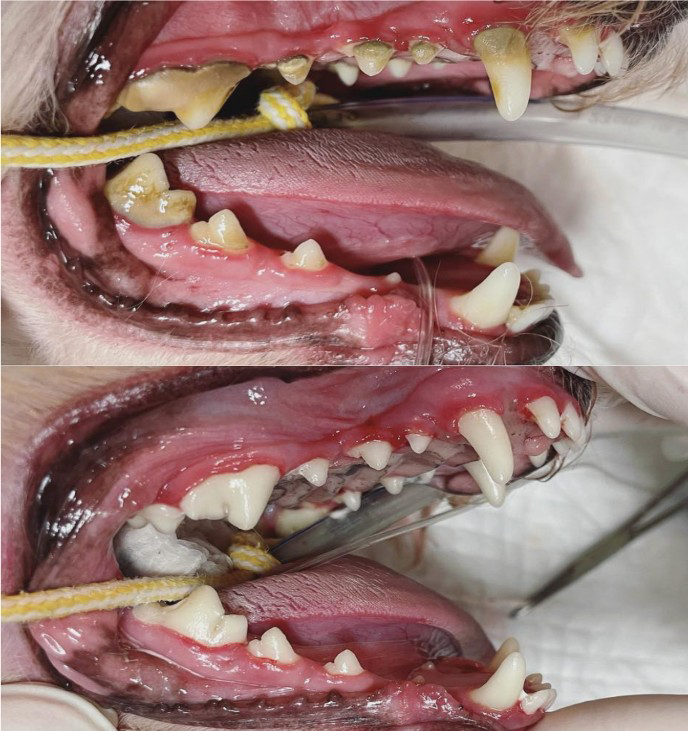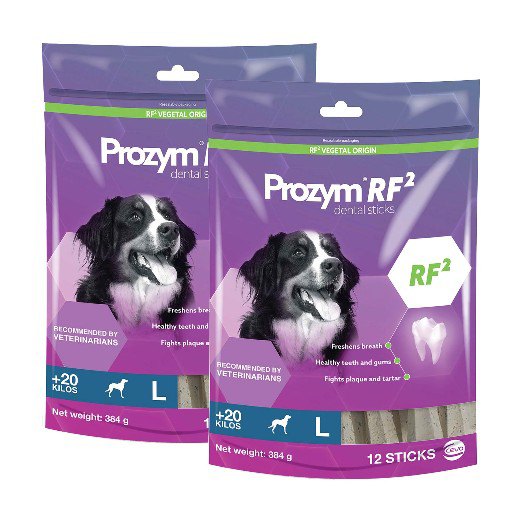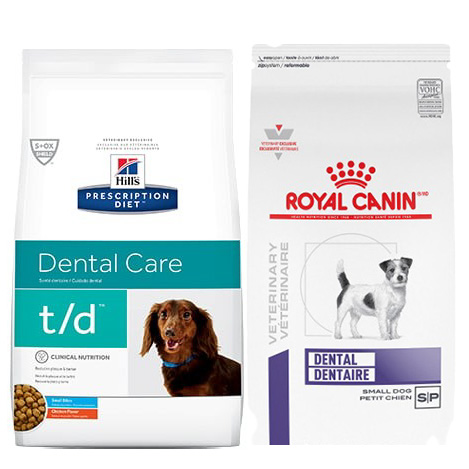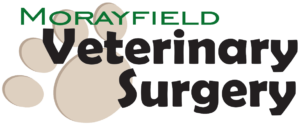Periodontal disease, or ‘dental’ disease, is a very common problem we deal with in Veterinary practice. If left untreated, it can lead to debilitating pain or discomfort, and even go so far as to impact the health of internal organs such as the heart, liver and kidneys.
However, in most cases dental disease can be prevented or reversed with regular dental checks, ongoing home dental care and dental procedures.
What causes dental disease?
Dental disease is caused by an over-accumulation of plaque. To start with, it can generally be removed by feeding your pets dental-specific food and brushing their teeth. However, if given enough time without intervention, this build-up eventually hardens and turns into tartar, which is a hard calcified layer made up of rotten food, saliva, bacteria and debris that forms over the surface of the teeth. At this point it generally cannot be removed without a dental procedure.
When this tartar forms, it can build up so much that it begins to form underneath the gum line, and destroy the supportive tissue around the teeth including the gum and bone. This is what causes the gingivitis component of dental disease, and what contributes to the pain and discomfort your pet may experience.
Clinical signs of dental disease in your pet
Depending on the severity of the dental disease, your pet can show clinical signs. Initially, it may start out as mild staining on the surface of the teeth, mild redness of the gums and smelly breath – and go so far as to going off food, being really unwell and even having teeth fall out. See the ‘Grades of Dental Disease’ section below for a visual representation of the stages of dental disease.
To summarise, clinical signs if dental disease regardless of the severity include (but aren’t limited to):
- discolouration of the teeth
- smelly breath
- pawing at the mouth
- swelling underneath the eye
- red or bleeding gums
- loss of appetite, lethargy
- difficult eating
- loose teeth or teeth falling out
- pus in or around the mouth
But just because you don’t notice these clinical signs doesn’t mean your pet doesn’t have some form of dental disease. A very common response from owners when we point out gingivitis or tartar build-up is that they don’t seem to be in pain, or that smelly breath is normal for an animal. And in a way, that may be true. However, highly offensive breath is never normal, and animals do have the natural instinct to suffer in silence. If you’re ever unsure, there are dental check consultations available with our Veterinarians – with no obligation to book in for a dental procedure.
Grades of Dental Disease
Grading dental disease is a way our Veterinarian’s can classify the severity of your pet’s dental disease. You’ll notice Stage 1 shows a relatively healthy tooth, with mild plaque build-up and slightly red gums. It’s at this stage that most owners don’t notice any external clinical signs. However, it is just a matter of time before it progresses and starts to become more obvious, like in Stage 3 or 4. These levels are at the high end of dental disease and is when the rest of the body also suffers – immune suppression, general un-wellness and lethargy is also very common by this stage.

Figure 1. Periodontal disease (Maybeck Animal Hospital, 2023)
What happens if my Vet recommends a dental procedure for my pet?
It is imperative that your pet receives regular dental health checks. This is generally done during a vaccination appointment, or you are welcome to book in a standalone dental check if you notice any of the above symptoms showing.
Due the nature of dental procedures, one of our Veterinarians must perform the dental check before your pet can be booked in. The severity of dental disease can vary so widely among each individual patient, so we need to know what to expect before starting the procedure; for example, your pet may need to go on pre-emptive antibiotics or have blood tests done too.
During a dental check, the Veterinarian will grade your pet’s teeth and gums, and, if applicable, recommend a dental procedure. Moving forward, our friendly staff will generate an estimate based on the clinical exam findings during the health check. Things like the grade of dental disease, your pets age and health status can affect the final outcome of the estimate.
Before vs. After Photos

Figure 2. Pre and post dental treatment on a canine patient (Narangba Vet Clinic, 2023)

Figure 3. Pre and post-dental treatment on a canine patient (Narangba Vet Clinic, 2023)
Dental Procedure After-Care
and should be kept safe and warm during this time. If your pet seems hungry, offer some soft food and water to start with to ensure proper swallowing is occurring before leaving unattended with food. Sometimes the patient may have a slight cough for a day or two following an anaesthetic procedure.
If your pet has had extractions, for the next few days you need to feed small cubes of meat or chicken, that can be swallowed whole, as this will allow gum pockets to settle. Preferably not dry food or mushy canned food during this time. After 4-5 days, you can begin to re-introduce normal dry biscuits if that is the preferred diet. Sometimes, as with human dental procedures, Veterinarian’s will place sutures in the gum to close some of the larger holes left behind after a tooth removal. There is no need to get these removed – over time they will simply fall out as the hole closes over.
Three months after your pet has had a dental procedure we invite you to return for a complimentary dental recheck. During this review our qualified Veterinary Nurse’s will discuss ongoing home care with you.
Preventative measures
There are several options to help maintain optimal dental health. The gold standard is to introduce a teeth-brushing program gradually and early. Training may take several days or weeks. At first, dip your finger into beef stock for a dog or tuna flavour for a cat, and rub your finger over the pet’s mouth and teeth. Make these initial sessions brief and positive. Introduce gauze on your finger with the same beef or tuna flavour and begin rubbing the teeth in a circular motion. Before graduation to a finger brush or soft-bristle toothbrush, place a small amount of toothpaste on your finger and allow the pet to taste it. Finally, apply a small dab of pet toothpaste onto moistened finger brush or toothbrush and begin bushing gently at a 45º angle away from the gum line. Toothpaste designed for people contains ingredients that may make your pets sick so only use pet-friendly paste at all times. Brushing should be done at the same time everyday so it becomes a part of your pets daily routine.
You can also feed raw as another option to assist in dental care. However, this will need to be introduced with care as bones are not suitable for all dogs and cats. Allow your pet to chew on a bone, not through it. Dispose of chewed bones promptly. Bones should always be bigger than a dog’s head so they cannot be swallowed. Whole bones are the safest. If a marrow bone has been pre-cut along its length, use a spoon to remove all of the central bone marrow. Ideally bone chewing should not be started until kittens or puppies are at least 6 months.
If bones aren’t your thing, there are a large range of dental products and specially formulated food available to also help maintain healthy teeth. We recommend brands like Prozym and Greenies that have dental chews and enzymatic mouthwash available, and food such as Hills t/d or Royal Canin dental. These are all available from the clinic and are a great substitute in lieu of teeth-brushing and bones.

Figure 4. Prozym Dental Sticks (Budget Pet Products, 2023)

Figure 5. Feline Greenies (Greenies, 2023)

Figure 6 & 7. Hill’s canine t/d and Royal Canin Dental Care (Hill’s, 2023 & Royal Canin, 2023)
Call the clinic today if you have any further queries regarding this topic!
References
https://www.maybeckvet.com/dog-dental-care
https://www.budgetpetproducts.com.au/product/prozym-dental-sticks-large-for-dogs-over-20kg-12-pack-x-2/12409
https://www.hillspet.com.au/dog-food/pd-td-canine-dry
https://www.greenies.com.au/products/cat-treats
